Below is an old Tumblr post I worked on a few years ago. It's quite a departure from my usual content but something I was very proud of and remain passionate about. Hopefully, time willing, I will do an updated timeline reflecting the timeline seen in the newest entries in Frogwares' Sherlock Holmes video game series, Sherlock Holmes: Chapter One and it's sequel (and remake of an older release) Sherlock Holmes: The Awakened. Without further ado, here it is:
A Timeline of the Frogwares Sherlock Holmes Games
Most of the following is based on direct information found in the various Sherlock Holmes video games made by Frogwares. While the games make several references to the original Canon as written by Sir Arthur Conan Doyle, they function separately as perhaps an alternate version of events with new material. For example, when some of the Canon cases are adapted or elements of cases are borrowed for the games original cases. That said, we can at least refer to and compare the Canon with the games own timeline for clues as to how it all lines up…or doesn’t line up at times.
I’ll attempt to provide sources where necessary for any claims I make that aren’t overtly referenced in the games themselves. I will be looking exclusively at the mainline games from Frogwares, not the more casual games released on handheld devices etc. Spoilers ahead, obviously.
1869+ - Chapter One (2021)

*As this game has not been released at the time of this writing, this is all based on the details we have from trailers and interviews*
Acting as a prequel to all previous entries in the series, Chapter One is said to revolve around a 21 year old Sherlock returning to his former family home on a Mediterranean island to investigate his mother’s death. As shown in the first trailer, Holmes’ mother is given the name ‘Violet Holmes’ on her gravestone, along with the years ‘1829-1869′ which evidently refer to the year of her birth and death. It’s possible the game takes place in 1869 shortly after Violet’s, though this hasn’t technically been confirmed as yet. In fact, the previous game Devil’s Daughter has a brief reference from Holmes to his mother dying when he as very young, so it’s possible this was foreshadowing. If the game does take place in 1869, it makes Holmes significantly older in his later adventures than might have been expected. Alternatively, perhaps Holmes returns to investigate Violet’s long-ago death following the introduction of new information. Other trailers say the game takes place ‘at the end of the 19th century’. Time will tell.
1888 - Versus Jack the Ripper (2009)
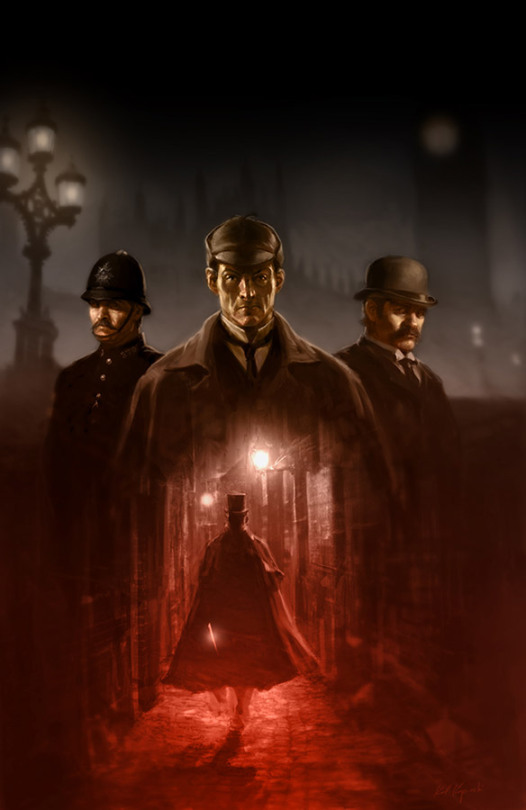
Events of this game occur from the 31st of August to the 9th November 1888 and loosely follow the historical events surrounding the mystery of Jack the Ripper. The location of Whitechapel is seen again in Testament of Sherlock Holmes and mentioned in Crimes & Punishments. At present this is the earliest point in the Frogwares Sherlock Holmes timeline, though evidently the next entry Sherlock Holmes: Chapter One will be set far earlier, dealing with a 21 year old Sherlock.

1894 - The Awakened (2007)

The game establishes in the opening scenes that it takes place ‘Two years ago, London, 6th of September 1894′ and spans a few months, ending in ‘Scotland, Ardnamurcham Lighthouse, December 1894′. During this time, Holmes’ and Watson’s journey spans from London to Switzerland to New Orleans back to London and finally the aforementioned Scottish lighthouse. Notably, while investigating the Swedish Edweiss Institute, Holmes discovers a seemingly brain damaged and amnesiac but very much alive Professor James Moriarty. During his escape, Sherlock triggers the Professor’s memories of his archenemy, which will lead to complications later on. Also, aside from the obvious Lovecraftian references and a few to the previous entry’s Silver Earring characters, we also get some solid D & D nods and brief encounter with a boy by the name of Hercule Poirot.

1895 - Crimes & Punishments (2014)

This game is probably my favourite in the series. It’s also the first to present a collection of smaller mysteries, rather than an overarching plot. That said, the game does present a loose thread throughout the background of the various and otherwise unconnected mysteries which leads to the final case involving the anarchic and socialist group known as The Merry Men. The first case -an adaption of The Adventure of Black Peter- can be definitively dated as taking place in 1895 due to the titular victim being born in 1845 and established as 50 years of age when he dies. According to the original Canon, Peter died July 1895, meaning at least this single mystery may take place right around the time of the Arsène Lupin game, either before or after.

The second case is loosely based on The Lost Special, a not-quite-Canon story by Sir Arthur Conan Doyle which was released in 1898 but set in 1890. However, the thread about The Merry Men makes it apparent that the game’s version of the adventure occurs after the previous case, so potentially still in 1895.The following case is an original one called Blood Bath and features a suspect named Sir Percival Blinkhorn. I mention this because there is a nod to this character in The Devil’s Daughter which gives his date of death as 1895, making it pretty easy to pin down when this mystery takes place. Additionally, because Crimes & Punishments presents the player with moral choices at the conclusion, via the mention in Devil’s Daughter we also have a canonical outcome for the case.
The next case is a fairly close adaption of The Adventure of the Abbey Grange set in 1897, but based on a photo dated 1893 that is said to be from ‘a year and a half ago’ this case mystery could be easily placed in either 1894 or 1895 much like the other cases before it. A document seen later in the case complicates matters by giving the murder victim’s date of death as November 7th 1894. Still, it may be possible to explain this, as in both the original story and this game’s case Holmes tells the guilty (though noble) party to return for his love in one year’s time. Perhaps the main case is set in 1894 before the rest of the game’s adventures? This is supported by the fact The Merry Men are not mentioned during the case, making it’s placement less connected to the prior mysteries.
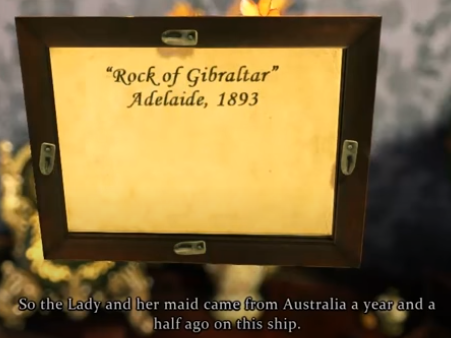
The following case is a wholly original adventure taking place at the Kew Gardens and thanks to a few documents found throughout the investigation, it’s evident that it occurs in 1895. The concluding case of the game is also an original one called A Half Moon Walk which brings The Merry Men into the finale. This case sees Holmes and Watson in Whitechapel once more and features references to the Ripper, naturally. This case specifically identifies fireworks being used in celebration of Queen Victoria’s Birthday and Sherlock notes it is May, which lines up with the real world event but indicates Black Peter may have occurred earlier in the year than previously thought. Confirmation of the year 1895 is found when comparing dates of the theft of jewellery said to be a decade prior in 1885. Curiously the games ending cinematic makes mention of a woman moving in next door, presumably intended at the time to foreshadow the next game in the series.
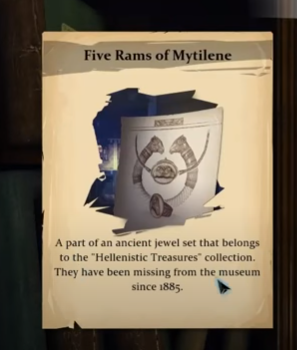
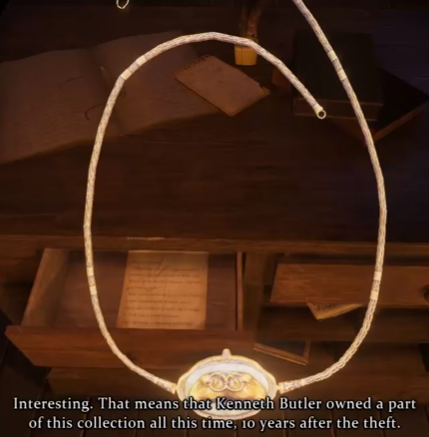
1895 - Versus Arsène Lupin/Nemesis (2007)

This battle of wits spans less than a week from the 14th to 19th of July 1895, with the titular French gentleman thief sets challenges for the master detective across London landmarks. Lupin is foreshadowed in the previous game, Awakened by way of a newspaper article detailing one of his exploits. Furthermore, we get another retroactive reference to the thief during the chronologically earlier Jack the Ripper game when Holmes receives ‘A gift from a young admirer’: a bottle of French champagne from ‘Raoul d’Andresy.’ The game also has overt references to the previous game thanks to Watson’s troubled nightmares and a Cthulhu statue. Oh, and there’s a cute Batman reference for those paying attention!

1896 - Mystery of the Persian Carpet (2008)

More of a side-story, this game begins on the 7th of August 1896 and appears to span only a few days. This game usually isn’t included with the main series of games, often being grouped with the handheld releases instead. I don’t have much to say about this entry, I’m afraid. It relies mostly on reused assets from the previous release in the form of still images for it’s mostly click and find gameplay. If anyone knows of any connections to other games in-universe, let me know!
1897 - Secret of the Silver Earring (2004)

This game also spans a brief period of time; the 14th to the 18th of October 1897. A character mentioned in this game (Hermann Grimble) is mentioned as having been burgled in a later game in the series, Arsène Lupin, making another retroactive connection between two of the games.
1898 - Testament of Sherlock Holmes (2012)

While the framing scenes of this games’ narrative features three little children reading from Watson’s journal at an indeterminate point in the future (though one that becomes more clear as the story progresses), the main story concerning Holmes begins in September 1898 as seen on the newspaper articles throughout the game. We also see returning characters Lucy and Danny from the Jack the Ripper game make appearances. Far more importantly, this game sees the return of mastermind and archfoe Moriarty and marks the first appearance of his daughter (unnamed at this point) in it’s closing moments. Moriarty dies for real this time, leaving his young daughter behind. Holmes adopts her.

1899 - The Mystery of the Mummy (2002)

The one that started the Frogwares video game series of Sherlock Holmes adventures. This story is very clearly set in ‘London 1899′ based on the opening cinematic, and features a solo Holmes answering a request from his distant cousin Andrew’s soon-to-be-wife Elisabeth Montcalfe. The case involves investigating the Montcalfe manor for clues relating to the disappearance and apparent death of Elisabeth’s father Lord Montcalfe, a respected Egyptologist. Dr Watson only appears in the final cinematic of the game, having been on vacation with Mrs Watson, which is I believe the only mention in the games of John’s marriage. This is also -on the surface- the latest chronological adventure for Sherlock, however I have one more I’d like to touch on that I believe *should* take place afterwards.

1895 or 1904/5 - The Devil’s Daughter (2016)

I’m going to be throwing speculation and a corrections into this entry’s timeline. Why? Because without it, the timeline falls apart and I feel it’s easily remedied with a little effort. This game forms a more connected plot which plays across the smaller cases Holmes investigates. The overarching plot surrounds new neighbour Miss Alice De’Bouvier. I think the previous entry, Crimes & Punishments was intended to lead directly into this game, with the teaser of a new female neighbour but as you’ll see that doesn’t make sense. Not only do we meet Miss De’Bouvier, but we also get to know Holmes’ young adopted daughter Katelyn who has been sent home from boarding school unexpectedly. Katelyn is the daughter of James Moriarty first seen as a small child in Testament. Kate becomes aware of the facts of her parentage by the game’s conclusion. Now, the first case, Prey Tell, provides our first continuity problem thanks to a boy named Tom from Whitechapel whom Holmes deduces was ‘born in 1887′ and is ‘8 years old’. This obviously places the game’s events no later than November 6th-7th 1895 (which is further confirmed by pre-paid rental slips and letters seen a little later), which doesn’t fit with Katelyn being a part of Holmes’ life before the events of her introduction in Testament set in 1898. I attribute this discontinuity to Frogwares changing plans during production, as they also made the creative decision to change the physical appearance of both Watson and Holmes and recast the voice actors in an evident attempt to softly refresh the series. There’s a potentially self-aware nod to this changed timeline: Tom has a copy of The Strand Magazine which first printed ‘The Adventure of the Norwood Builder’ by Doyle in his possession. This Canon story is set in 1894 but was published in 1903 however the cover in-game gives it an 1893 cover date, a whole decade earlier than in the real world. Further discontinuity occurs when Katelyn is gifted a copy of ‘Dracula’ by Alice. If the story were to take place in 1895, then Dracula wouldn’t be in print for another two years in 1897 let alone, as is mentioned, banned from Katelyn’s boarding school library.

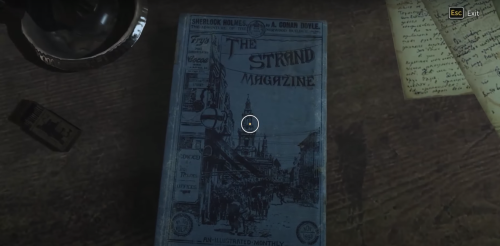
The second case, A Study in Green is where we see the earlier mentioned reference to Sir Percival Blinkhorn. Additionally, Miss Alice gives Katelyn a copy of The Adventure of the Empty House, which in the real world was published in 1903 and is set in 1894. It details Sherlock’s miraculous return following his apparent death 3 years prior during his struggle with Moriarty. A victim in this case may be a reference to Tarzan, being named Zacharias Greystoke. Oh, and a Sir J Brombsy is also among the list of deceased donors, presumably a relative to the family seen in the Silver Earring game. An expedition in 1881 is said to have been 14 years prior.


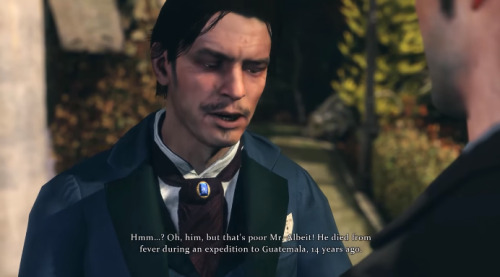
The third case presents us with Miss Alice’s birth certificate which gives the year 1867 and we know she is at least 21 years of age (though, evidently older) thanks to another letter. Sherlock discovers he played a major role in Alice’s father being arrested in 1875 which is said to be 20 years prior, again setting the events of this game in 1895. While it’s not impossible that Holmes was active in 1875, it does make it an extremely early adventure based on the Canon, one that predates Watson’s first meeting with Sherlock.


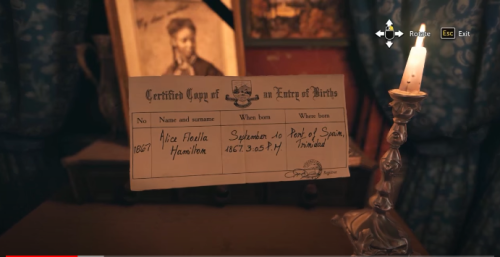

Despite all of these clear and established dates, we still have to consider how this story fits into the continuity of the other games, particularly Katelyn only entering Holmes care in 1898 as established in Testament. A part of me suspects the writers simply liked the concept of Holmes raising the daughter of his greatest foe and perhaps preferred to have this occur earlier, to line up better wth Moriarty’s original death in the Canon during The Final Problem. Either way, I find it more satisfying to use a looser approach to this entry: ignore the established dates from documents and simply place it where it best fits in the game series order of events over all. Essentially, I propose we adopt a sliding timeline to the series, almost. I don’t believe there are any in-dialogue references to the years in question, so we could apply the same lower-tier canonicity to the dates in documents as one might to movie props that contradict the year given on screen or in dialogue. There’s some fun little discrepancies in the fourth case that make me more certain that the game should at least take place at a later year then indicated.
The fourth case Chain Reaction (and my person favourite of the game) involves investigating a traffic ‘accident’. A key aspect of the mystery involves a stolen technical cab from the Underground Electric Railways Company of London, which is in fact a real company that upgraded the existing system of underground railway between 1903 and 1905 to use electricity. If this adventure and the rest of the game were to take place in 1895, this would be an anachronism. Hence why I propose a date of 1904 (or 1905 if you prefer a nice round decade jump) which allows for the electrical system to exist and also gives Katelyn a sensible placement in the timeline after the events of Testament. In fact, it also allows Katelyn to be the older child who attends boarding school, reads Dracula (published in 1897) and generally behaves like a girl older than the small child seen in Testament. Perhaps 6 years older? Of course, this requires us to ignore the specific dates in all the previous cases in the game, but as none of them appear to be tied to anything that absolutely requires them to take place in 1895, I think it would be just as easy to move them forward a decade without affecting anything relevant to the narrative.
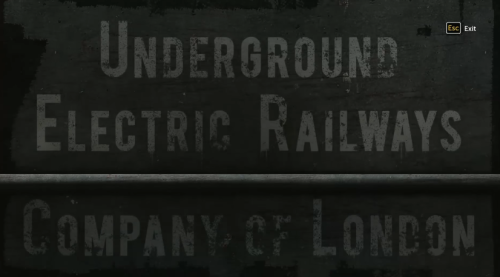
So, yes, it’s not a perfect solution but it does correct the continuity errors inherent by placing this story earlier than Holmes’ first meeting with Katelyn in1898. 1904 or 1905 is a better placement for the narrative of the Devil’s Daughter. This is where I think the games narrative should be set. I personally believe the superficial appearances of Watson and Holmes further justify this approach, as visual design and details change throughout the series based on the development teams influences and preferences at the time and can thus be dismissed when they are contradictory to the overall narrative. Who knows, maybe Watson just changed the dates and this game is merely a retelling with his usual embellishments?
Anyway, that was my attempt at a timeline for this great series of games. If you have any notes, please don’t hesitate to share them!
Until I stop saying 'Slava Ukraini', I remain
frogoat

%20049-017.jpg)
%20049-018.jpg)







-008.jpg)
-009.jpg)
-010.jpg)
-011.jpg)
-074.jpg)
-076.jpg)
-078.jpg)
-011.jpg)

-028.jpg)
-029.jpg)
-041.jpg)
-056.jpg)
-057.jpg)
-072.jpg)


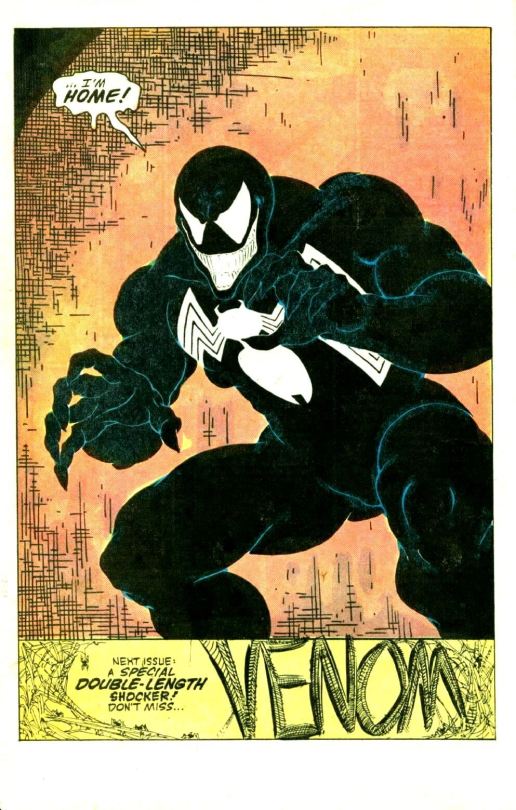




%20009-014.jpg)













%20001-011.jpg)
%20001-012.jpg)
